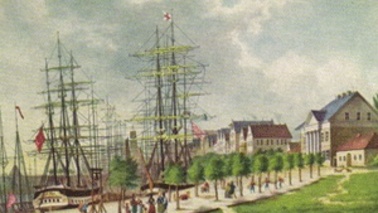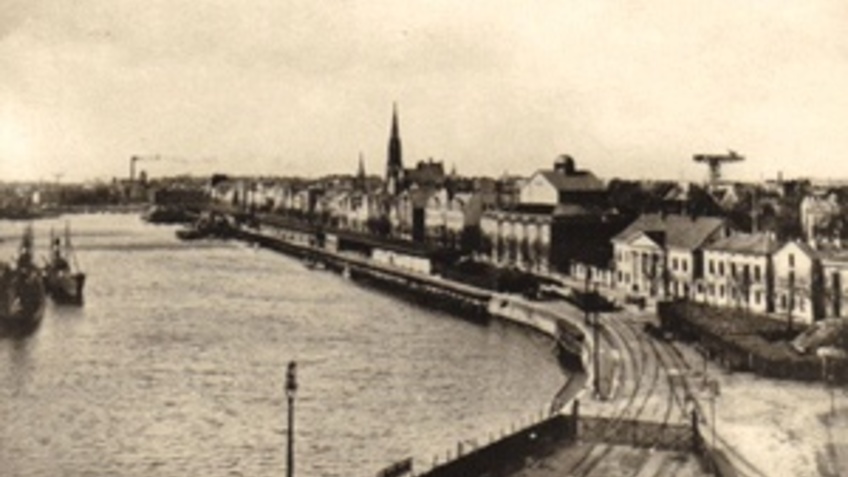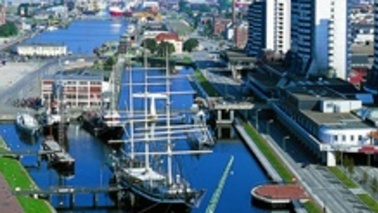
Construction and History of the Old Harbor
The first artificially-built harbour basin was the Alter Hafen (“Old Port”), which laid the foundation for the subsequent development of the city and the port area.
In 1827, the City of Bremen commissioned the renowned Dutch construction engineer Johannes Jacobus van Ronzelen (1800-1865). Under his supervision and based on his plans, about 900 workmen commenced construction in July 1827of a basin of 750 metres length, a beam of 57.5 metres and a depth of 5.25 metres. A lock between the southern tip of the basin and the sea was also constructed. This was eventually closed in 1926 and later filled in with sand in 1933.
The works for the Alter Hafen basin were completed using the most sophisticated technical equipment and knowledge of the time. Even Germany’s greatest poet, 80-year-old Johann Wolfgang von Goethe, took note of what was going on in 1829. The harbour construction works on the Weser estuary possibly influenced scenes in the second part of his renowned “Faust” drama.
In September 1830, the US sailing vessel DRAPER was the first to call at the new port. This port soon developed as a centre for the booming emigration to the US. After 1851, that business shifted from Alter to Neuer Hafen basin. The former was extended and used as a fishery basin from 1892 on. In 1930, the trawler fleets left Alter Hafen basin and moved to the nearby port of Geestemünde.
Afterwards, only a few ships used Alter Hafen, which was reduced in size several times. After 1966, it saw a renaissance in a new and still existing function, as the museum port of Bremerhaven. In 1975, the eastern edge was moved, the western one however extended. The hinged bridge in typical Dutch style, leading to the Columbus-Center, was constructed and installed by the Bremerhaven firm Rogge. Old walls dating from former periods of Alter Hafen are still preserved and to be seen near the basin edges of today.
City Map Extract


